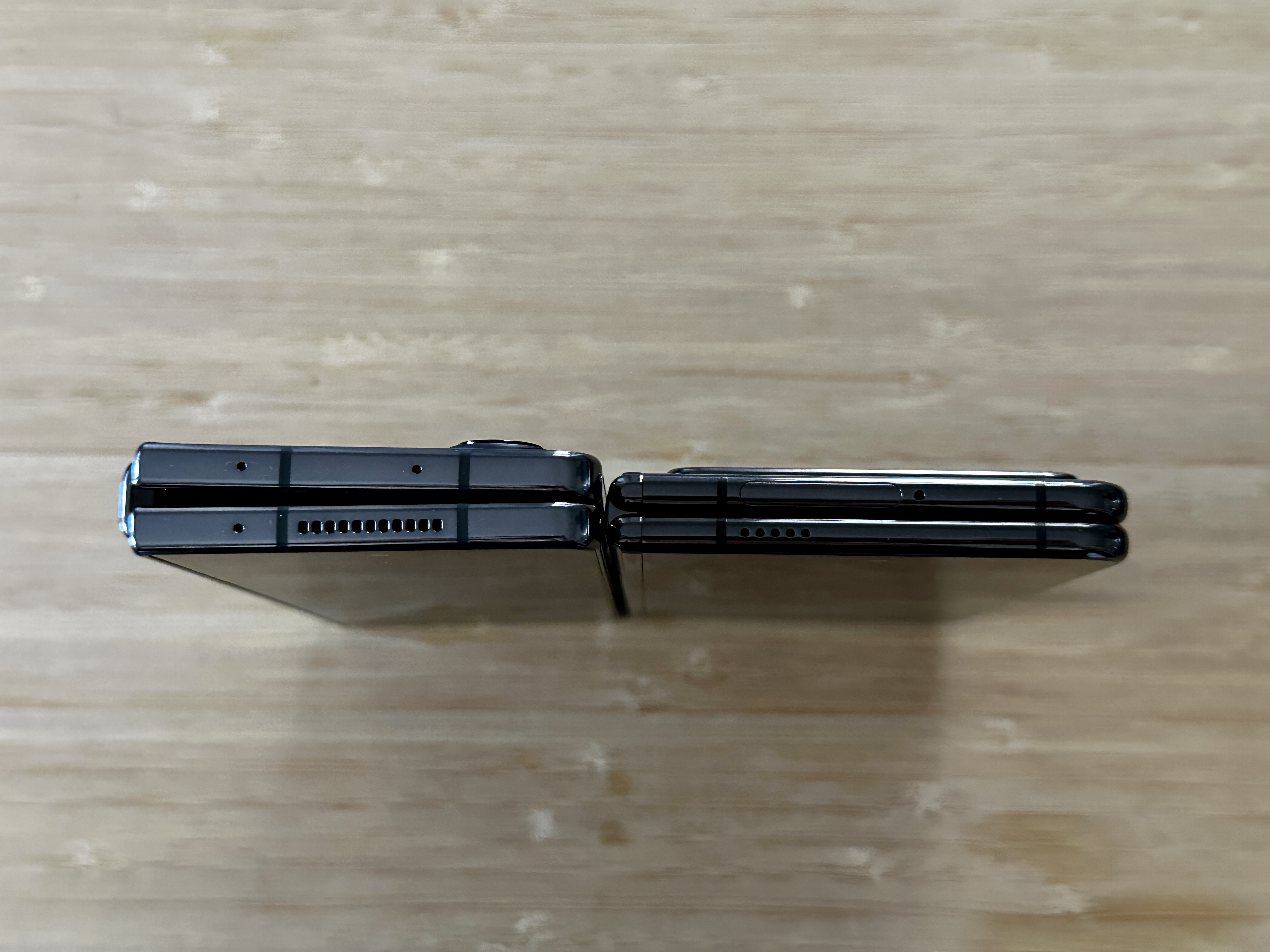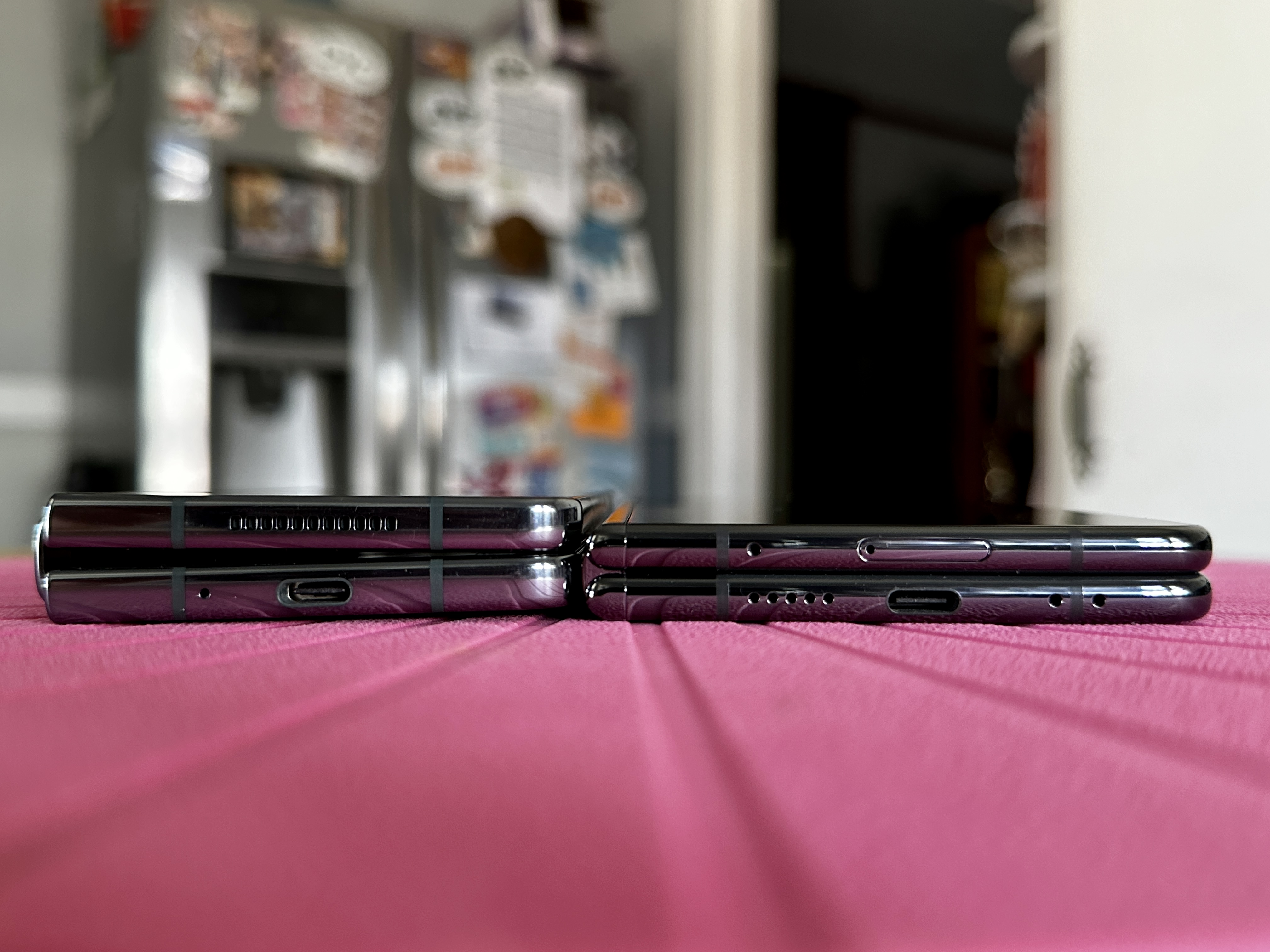
The Google Pixel Fold is here, and it has one major competitor, the Samsung Galaxy Z Fold 4. The question is, which one is the big-screen folding smartphone to buy?
- Google Pixel Fold vs. Galaxy Z Fold 4: specs
- Pixel Fold vs. Galaxy Z Fold 4: design and display
- Pixel Fold vs. Galaxy Z Fold 4: durability and hinge
- Pixel Fold vs. Galaxy Z Fold 4: performance, battery life, and charging
- Pixel Fold vs. Galaxy Z Fold 4: cameras
- Pixel Fold vs. Galaxy Z Fold 4: software and features
- Pixel Fold vs. Galaxy Z Fold 4: price and availability
- Overall winner: Samsung Galaxy Z Fold 4
After all, they are similarly priced and do basically the same thing, so if you’re looking at one, you really should be looking at the other. But it’s not an easy decision to make, so we’re going to take a really close look at both to help you choose the right one.
Google Pixel Fold vs. Galaxy Z Fold 4: specs
| Samsung Galaxy Z Fold 4 | Google Pixel Fold | |
| Size | Unfolded: 130.1 x 155.1 x 6.3mm Folded: 67.1 x 155.1 x 15.8mm |
Unfolded: 139.7 x 158.7 x 5.8mm Folded: 139.7 x 79.5 x 12.1mm |
| Weight | 263 grams (9.27 ounces) | 283 grams (10 ounces) |
| Screen size | Main: 7.6-inch Dynamic AMOLED 2X, 120Hz Cover screen: 6.2-inch Super AMOLED 2X, 120Hz |
Main: 7.6-inch OLED, 120Hz Cover screen: 5.8-inch OLED, 120Hz |
| Screen resolution | Main: 2176 x 1812 pixels Cover screen: 2316 x 904 pixels |
Main: 2208 x 1840 pixels Cover screen: 2092 x 1080 pixels |
| Operating system | Android 13 with OneUI 5.1 | Android 13 |
| Storage | 256GB, 512GB, 1TB | 256GB, 512GB |
| MicroSD card slot | No | No |
| Tap-to-pay services | Google Pay, Samsung Pay | Google Pay |
| Processor | Qualcomm 8+ Gen 1 | Google Tensor G2 |
| RAM | 12GB | 12GB |
| Rear Camera | 50-megapixel main camera, 12MP ultrawide, and 10MP telephoto with 3x optical zoom | 48-megapixel main camera, 10.8MP ultrawide, and 10.8MP telephoto with 5x optical zoom |
| Front Camera | Inner screen: 4MP under-display Cover screen: 10MP |
Inner screen: 8MP Cover screen: 9.5MP |
| Bluetooth version | 5.2 | 5.2 |
| Ports | USB-C | USB-C |
| Fingerprint sensor | Yes, side-mounted | Yes, side-mounted |
| Water resistance | IPX8 | IPX8 |
| Battery | 4,400mAh Fast charging (25W, charger not included) Fast wireless charging (10W) Reverse wireless charging (4.5W) |
4,821mAh Fast charging (30W, charger not included) Wireless charging |
| App marketplace | Google Play Store | Google Play Store |
| Network support | All carriers | All carriers |
| Colors | Graygreen, Phantom Black, Beige, Burgandy | Obsidian, Porcelain |
| Prices | $1,800 | $1,800 |
| Buy from | Samsung, AT&T, T-Mobile, Verizon, Amazon, Best Buy, Walmart |
Samsung, AT&T, T-Mobile, Verizon, Amazon, Best Buy, Walmart
|
| Review | Galaxy Z Fold 4 review | Google Pixel Fold review |
Pixel Fold vs. Galaxy Z Fold 4: design and display
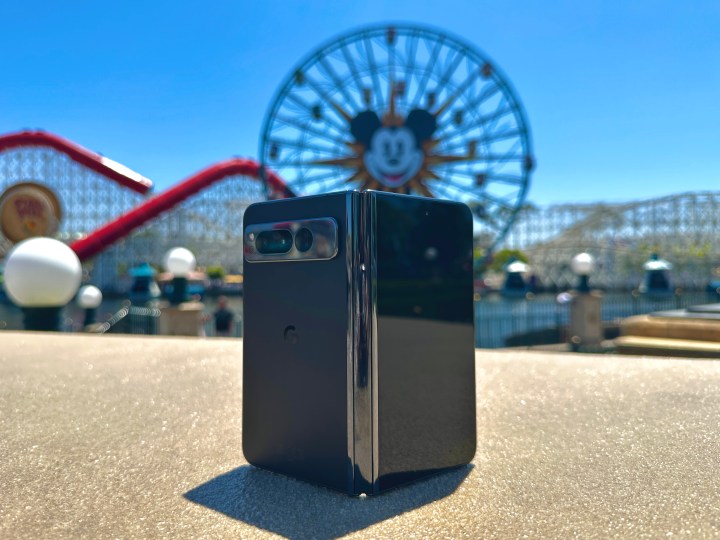
The Galaxy Z Fold 4 is the Pixel Fold’s best-known competitor, but the Pixel Fold’s shape and design are actually closer to the Oppo Find N2 folding phone. However, as this phone isn’t available outside China, you’re more likely to be familiar with the size and shape of the Samsung Galaxy Z Fold 4, which is sold globally.
Folded up, the Pixel Fold has a 5.8-inch cover screen, while the Z Fold 4 has a 6.2-inch outer screen. While it’s obviously smaller than the Z Fold 4, the dimensions of the Google Pixel Fold feel more like a standard phone than the Z Fold 4, which makes it more comfortable to use if it’s not unfolded.
The Z Fold 4 is 155mm tall by 67mm wide, while the Pixel Fold is 140mm x 75mm, making it shorter and wider, and therefore feels more like a non-folding phone. For reference, a OnePlus 11, which doesn’t fold, is 163mm tall and 74mm wide. It’s the thickness where you’ll notice the most difference, though. The Z Fold 4 has a small gap between sections when folded up, so it’s 15.8mm at the hinge and 14.2mm where the two parts meet. The Pixel Fold doesn’t have the same gap, so it’s a uniform 12.1mm thick when folded up.
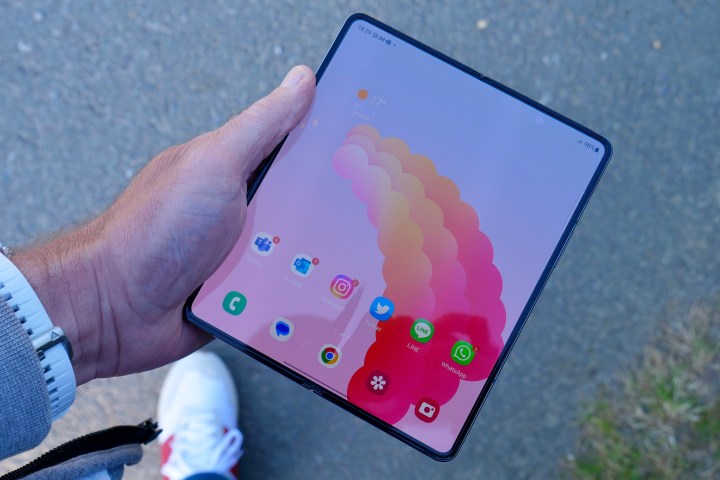
Open the phones up, and you look at a 7.6-inch, 120Hz screen on both phones, but again the dimensions of the phones are different. The unfolded Galaxy Z Fold 4 is 155mm wide, 130mm tall, and 6.3mm thick. The Pixel Fold is 158mm wide, 139mm tall, and 5.8mm thick. The bezels around the screen on the open Pixel Fold are more substantial than the Z Fold 4’s, and though the central crease is still noticeable, it’s not as prominent due to the design of the hinge.
Google has given the Pixel Fold’s rear panel a similar look to the non-folding Pixel 7 and Pixel 7 Pro, with a visor-like camera module running across the top of the phone’s rear panel and a very classy curved metal chassis. However, unlike the regular Pixel series, the camera bar on the Pixel Fold does not go from edge to edge. The Galaxy Z Fold 4 has a triple-camera vertical module on the back, which is more subtle, and a more slab-sided chassis.
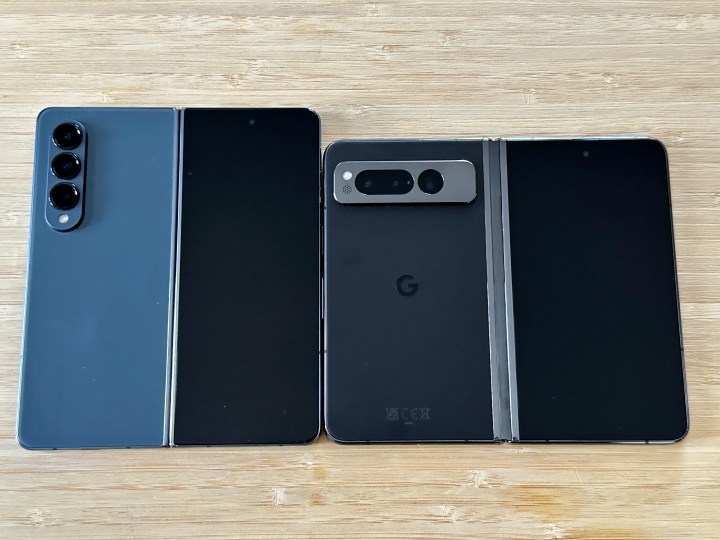
The Pixel Fold is definitely more eye-catching, and the dimensions make it will more manageable and usable closed up than the Z Fold 4. However, the more you use the Samsung phone’s tall outer screen, the more normal it feels. The inner screen is the same size and has basically the same spec, so you won’t notice any usability difference. That said, there is a surprising difference in weight between the two. The Z Fold 4 is 263 grams, but the Pixel Fold is 283 grams. It may not sound like much, but you will notice that extra 20 grams, and seeing as the Z Fold 4 is already heavy enough, an even heavier phone isn’t all that appealing.
Samsung’s choice of colors is also more enticing. The Samsung exclusive Burgundy is very tempting, along with the more easily obtained Graygreen option, which joins the more standard black and Beige colors. For the Pixel Fold, you have the choice of Obsidian (black) or Porcelain (white) … and that’s it.
All this makes it difficult to pick a winner here. The weight of the Pixel Fold hurts it, as does the lack of color choice, and the bezels and crease are quite noticeable, but it’s one of those things you get accustomed to after use. Samsung has had four generations of folding phones to get the design right, and it does show, but there’s a lot to be said about the everyday usability of the Pixel Fold’s overall dimensions.
Winner: Draw
Pixel Fold vs. Galaxy Z Fold 4: durability and hinge

Moving parts and folding screens instantly raise concerns over durability, so what have Samsung and Google done to make sure their folding phones last for years? The Pixel Fold is made of multi-alloy steel with a polished finish, and the hinge is described as a “dual-axis, quad-cam mechanism,” which can hold itself open at different points. Gorilla Glass Victus covers the outer screen and the case back, with an ultra-thin glass layer over the inner screen, finished with a plastic layer. The entire phone has an IPX8 water resistance rating. This is extremely similar to the Galaxy Z Fold 4, apart from Samsung using its own Armor Aluminum material for the chassis.
So far, in our testing with the Google Pixel Fold, the hinge works okay. It’s mostly smooth and easy to open, but the unit we received isn’t completely silent — it seems to make a small pop sound when you open it up, and we’ve only had it for about a week. Though it doesn’t appear to show any damage or hinder usability, for now, it is something to make a note of. But it’s also important to remember that the Google Pixel Fold’s hinge design makes it so that there is no gap when it’s closed, unlike the Z Fold 4.
Samsung redesigned its hinge for the Z Fold 4, shifting to a design that’s thinner and lighter — yet still just as durable. It’s silent, smooth, and a pleasure to use. Samsung is the leader when it comes to hinges, as noted when we compared the Z Flip 4 to the Motorola Razr (2022) and the Oppo Find N2 Flip.
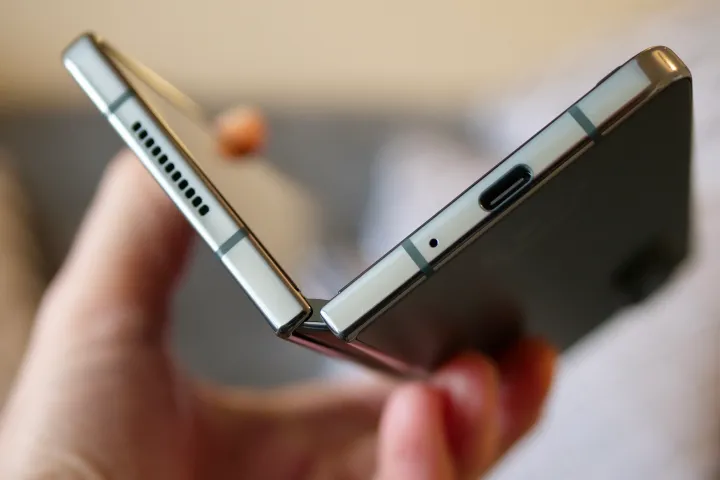
The Pixel Fold hinge design is impressive mostly because Google figured out how to create a hinge that doesn’t have a gap when closed, especially considering that this is the company’s first foldable. But while it’s nice to open up and smooth, we’re not sure about that slight little popping sound it does on our review unit. However, Samsung has been making foldables for years now, and the Z Fold 4 has an impressive hinge overall, so the Z Fold 4 still has the edge here.
Winner: Samsung Galaxy Z Fold 4
Pixel Fold vs. Galaxy Z Fold 4: performance, battery life, and charging
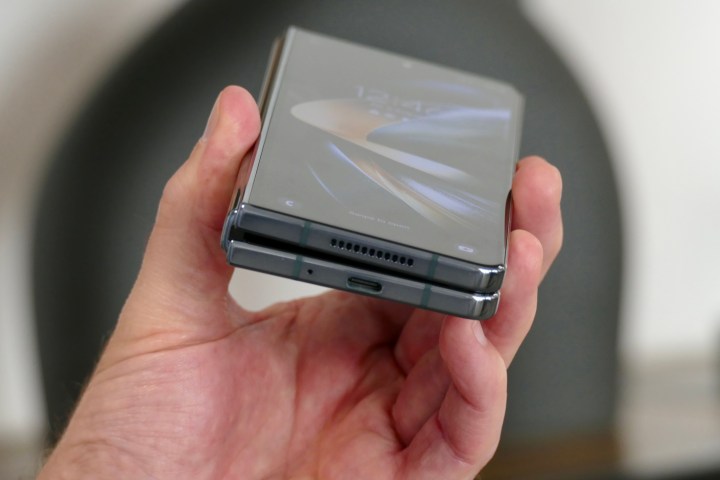
Samsung uses the Qualcomm Snapdragon 8+ Gen 1 processor for the Galaxy Z Fold 4, paired with 12GB of RAM and a choice of internal storage capacities of up to 1TB. The battery has a fairly modest 4,400mAh capacity and is recharged using the company’s 25W Super Fast Charging system. The Galaxy Z Fold 4 is fast, efficient, and reliable, and the battery will last more than a day with moderate use.
Google has chosen its Tensor G2 processor, which is also used in the Pixel 7 and Pixel 7 Pro, with 12GB of RAM and a choice of either 256GB or 512GB internal storage space. The battery has a larger capacity of 4,821mAh and is recharged using a 30W USB-PD 3.0 charger. Neither phone comes with a charging block, but both do have Qi wireless charging, albeit the Pixel Fold is a bit slower at 7.5W wireless compared to the Z Fold 4’s 15W. Google claims 24 hours of use from its battery, and in our testing, with heavy use, this is pretty accurate.
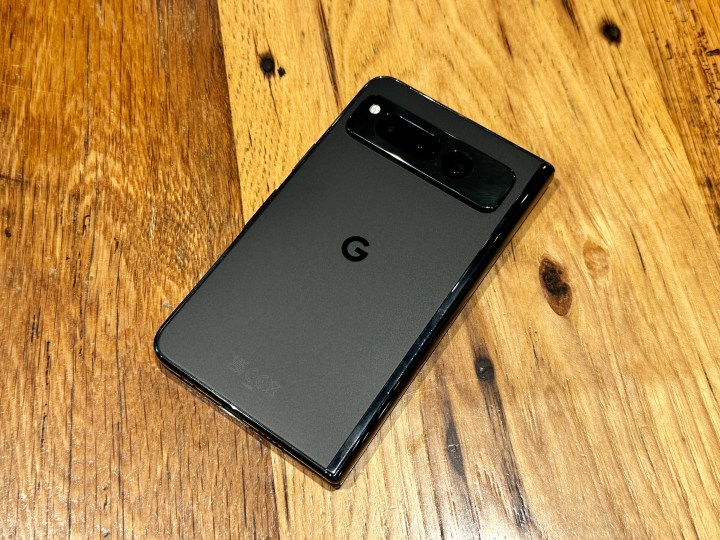
Tensor G2 is a solid performer but can get hot under strain, and so far, hasn’t been noted for its efficiency. This is unlike the Snapdragon 8+ Gen 1, which remains cool, calm, and collected even when pushed hard. Samsung’s decision to offer 1TB storage in addition to 256GB and 512GB makes it more appealing to power users and those who expect to keep the phone for years.
Winner: Samsung Galaxy Z Fold 4
Pixel Fold vs. Galaxy Z Fold 4: cameras
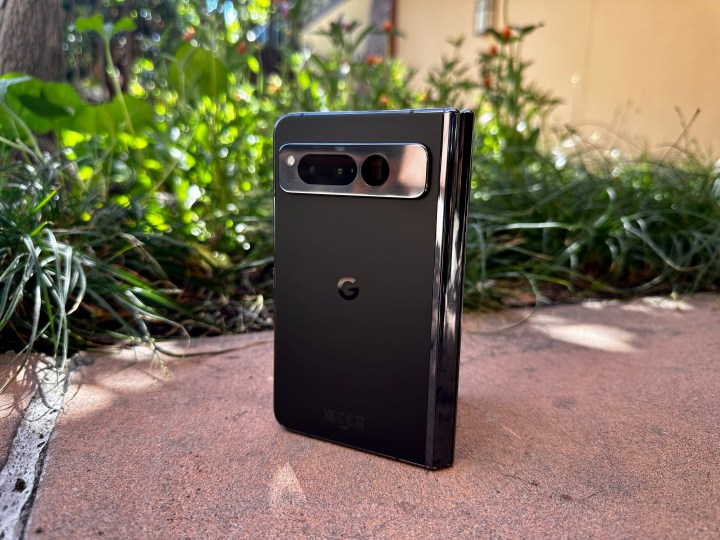
If there’s one thing Google does really well, it’s camera tech, and the Pixel Fold continues this tradition. There are three cameras on the back of the Pixel Fold: a 48MP main camera with optical image stabilization (OIS), a 10.8MP wide-angle, and a 10.8MP telephoto camera with a 5x optical zoom. There are also three cameras on the Z Fold 4, including a main 12MP camera with OIS, a 50MP wide-angle camera, and a 10MP telephoto for a 3x optical zoom.
On the Z Fold 4’s cover screen is a 10MP selfie camera, and on (or should we say, under) the inner screen is a 4MP under-display camera. The Pixel Fold doesn’t hide the inner camera under the screen, but this may not be a bad thing, and it has 8MP, while the cover screen camera has 9.5MP. Both are fixed-focus cameras.

While the Z Fold 4 takes good photos, it can’t keep pace with the brand’s camera flagship, the Galaxy S23 Ultra, and this lets the Google Pixel Fold take the lead. While the camera specs aren’t as good as the Pixel 7 Pro, a lot of Google’s camera success comes from its software, and that holds true with the Pixel Fold. We’ve taken the Pixel Fold for a test drive with the cameras, and the colors often come out nice and lively without being over-saturated like Samsung images tend to be. It’s more realistic looking, and honestly, it’s hard to capture a bad photo with the Pixel Fold. In our testing with the Z Fold 4, the images come out way too bright and vibrant to the point where almost everything looks unnatural.
Unless you’re into super vivid-looking photos, the Pixel Fold is the way to go.
Winner: Google Pixel Fold
Pixel Fold vs. Galaxy Z Fold 4: software and features
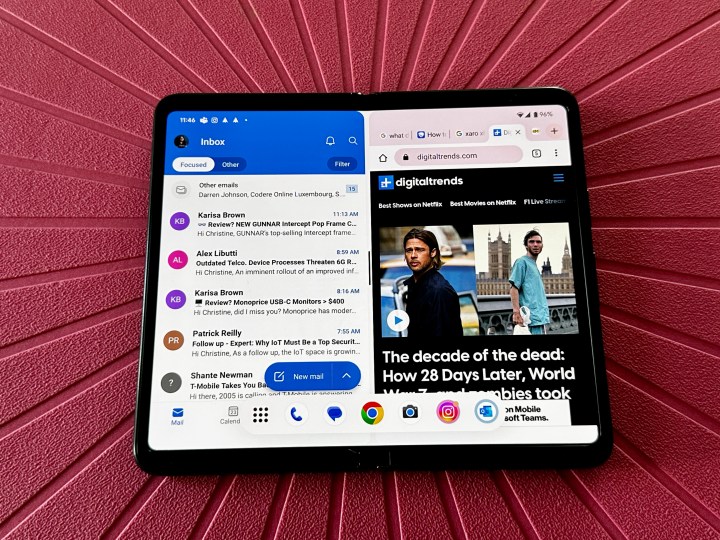
The Galaxy Z Fold 4 has Android 13 with Samsung’s One UI 5.1 installed and is all set to receive new OS updates until 2026. The Google Pixel Fold comes with Android 13 and Google’s vision of the software interface, with OS updates also expected until 2026. This is because Google provides three years of major updates, while Samsung promises four years. Both get five years of security updates, so the Pixel Fold should have one more year’s worth of support compared to the Z Fold 4.
Both phones operate normally with the screen closed and provide multi-tasking and split-screen features when the screen is open. The Pixel Fold has an easily accessible taskbar when unfolded, which makes swapping between apps and using the split screen mode faster and easier, and a similar system is available on the Z Fold 4. Both phones can be used partially unfolded in a “tabletop” orientation, and some apps dynamically adjust to the format, with video showing on the top half and controls on the lower half, for example.
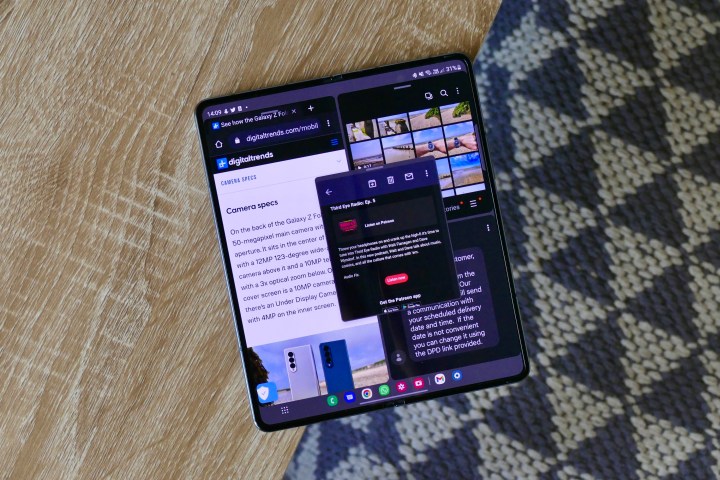
Both phones have the ability to use the cover screen as a viewfinder with the phone open, allowing you to use the rear camera for selfies, plus there’s the Magic Eraser photo tool on the Pixel Fold and Samsung’s interpretation of the same thing on the Z Fold 4. These are both powerful phones, so there really shouldn’t be any difference in performance, and the software experience on both should be of the highest standard. Some may prefer Google’s cleaner interface design, while others may like Samsung’s additional features.
The Pixel Fold will eventually get a software feature called Dual Screen Interpreter, where live conversations are translated and displayed on the inner and outer screens to help speed up and make conversations in different languages more natural. It will not arrive at launch, though, and is expected sometime in the fall with Android 14. Samsung has made the Galaxy Z Fold 4 compatible with the S Pen stylus, and although doesn’t fit inside the device like the S23 Ultra, it may prove helpful to some.
Winner: Draw
Pixel Fold vs. Galaxy Z Fold 4: price and availability
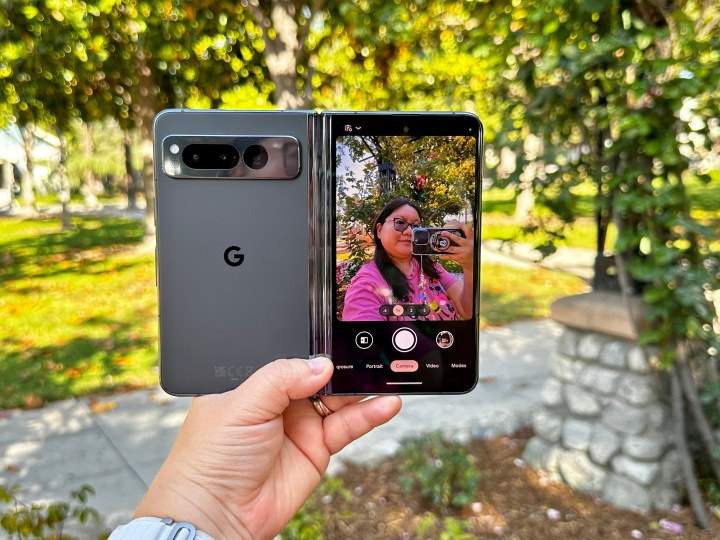
The Google Pixel Fold is available now starting at $1799 or 1,749 British pounds in the U.K. The Galaxy Z Fold 4 is available now and starts at $1,799, or 1,649 pounds in the U.K.
If you want to save some dough, you’ll want to check your carrier for any deals it has. For example, AT&T has a deal right now where you can get a Pixel Fold for just $25 a month for 36 months, no trade-in required. That means the overall cost ends up being $900, which is about half the retail cost, but you need to stick it out for three years. Samsung also runs a comprehensive trade-in program, and the Z Fold 4 can regularly be found for less than the retail price.
Overall winner: Samsung Galaxy Z Fold 4
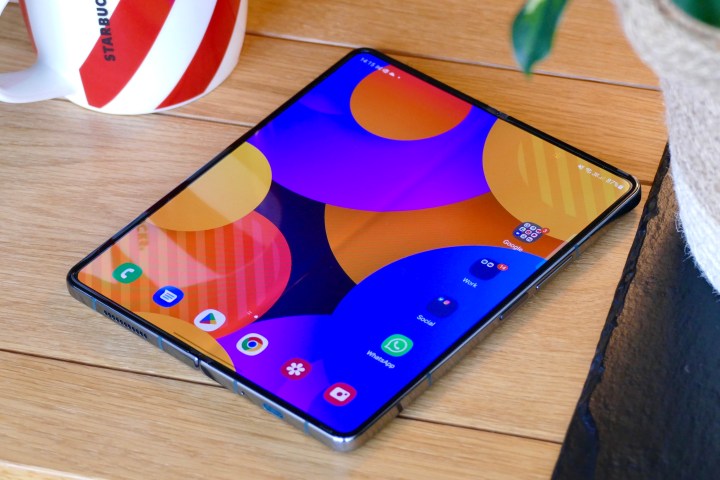
The Samsung Galaxy Z Fold 4 is the overall winner right now, despite the Pixel Fold being available and having a positive review from us. That’s because while we like the Google Pixel Fold, Samsung has had a head start for several years in this market category, and it shows in the hardware.
Though it’s not perfect, the Galaxy Z Fold 4 has a more resilient hinge design, though the gap is a little annoying. Google has a strong start and shows plenty of promise, but Samsung’s years of experience are nothing to scoff at. Plus, while Google Pixel Fold is capable of simple multitasking, the Galaxy Z Fold 4 can run more than two apps at once in split-screen multitasking mode. It’s overall more capable for productivity on the go if that’s what you need. Plus, the Galaxy Z Fold 4 comes with up to 1TB capacity, while the Pixel Fold only goes up to 512GB, making the Z Fold 4 the better choice for power users who intend to keep the device for several years.

However, the Google Pixel Fold is the better camera between the two. That’s because of Google Tensor’s computational magic, which makes images look realistic and true to life, not oversaturated with colors with eye-popping intensity levels. It’s hard to take a bad photo with the Pixel Fold, and so far, we’ve been happy with all the results in our photos. If you care about photo quality, then the Pixel Fold has the advantage.
This leads us to another important factor. Samsung has years of experience making folding phones, while Google does not. The Pixel Fold is a first-generation device, and given how experiences can vary with the Pixel 7 and Pixel 7 Pro, it’s not a certainty the Fold will be an instant winner. It’s definitely something to consider before buying such an expensive smartphone, and we’d say you’re in a safer pair of hands with Samsung and the Galaxy Z Fold 4 at this stage.
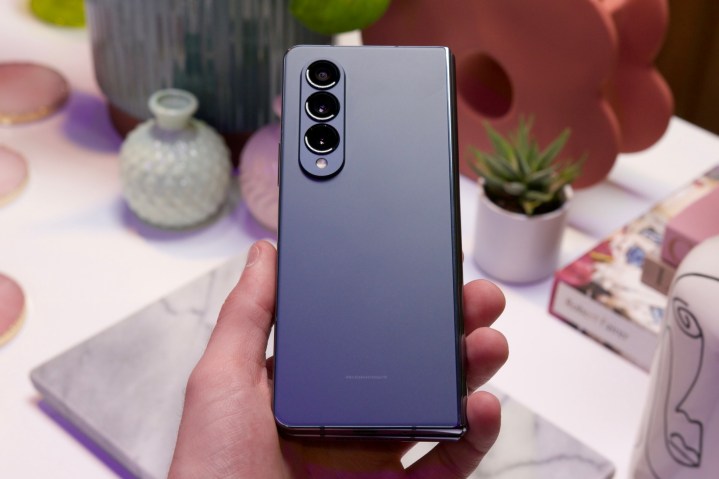
But we are expecting a Samsung Unpacked event in July 2023, where it’s certain that the Galaxy Z Fold 5 (and Z Flip 5) will be revealed. If you can hold out a little longer, it will be worth seeing what Samsung is bringing to the table with the next generation of the Galaxy Z Fold series.

